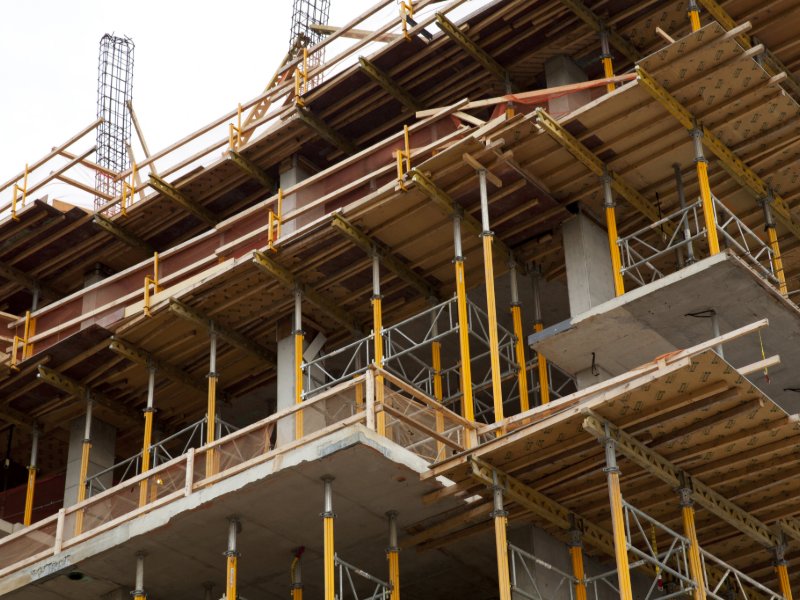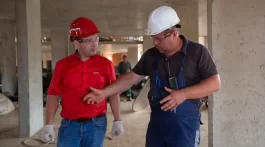Scaffolding accidents are a primary source of injury and death with regards to construction accidents in The United States.
While the vast majority of construction general contractors and subcontractors make safety the foremost topic for employees and during training seminars. In 2018 Scaffolding accounted for 61 fatalities in the United States – and according to OSHA, all of which could have been controlled by compliance with OSHA standards.
In the United States scaffolding accidents account for approximately 4500 injuries each year resulting in serious injury, and in certain instances, fatal accidents.
Who Sets The Standards for Scaffolding?
Occupational Safety and Health Administration (OSHA) is the governing entity that establishes a healthy working condition in the United States. To help ensure safety for individuals in the construction workforce, there are several safety measures that a sub-contractor and a general contractor need to adhere to for numerous reasons. Some of the standards that are required for scaffolding include:
Guardrails
Section 1926.451 of OSHA outlines that guardrails are required to protect workers on a scaffolding structure that is at equal to or greater than 6 feet off the ground level (above or below).
The installation of guardrails are pertinent to help promote safety measures from construction workers. The guardrails require certain height limitations and all guardrails must be at least 38 inches to 45 inches in height.
Toe boards
Toe boards are applied to scaffolding that helps prevent objects from falling onto lower scaffolding or lower. Toe boards are essentially a tiny wall that are affixed to scaffolding structures that helps prevent objects and/or people from rolling over the side onto people or objects below. The implementations of toe boards help reduce injuries and help save lives.
Tying-off
Tying off is an imperative safety measure that helps keep construction workers safe when working at heights or on scaffolding. The expression “tie-high or die” is a commonly heard expression in the construction industry. While tying off, it is imperative to ensure that anchorage, body support and connectors.
Anchorage, also commonly called a tie-off point, is a secure piece of attachment that connects to a very strong piece of material (must be able to hold at least 5,000 lbs).
Body support is the equipment that is worn around the core and torso of a construction worker. This harness holds the individual and distributes fall prevention forces across the harnessed body parts of the construction worker.
Connectors form a critical link between the body support worn by a worker, and the anchorage that supports the weight of the individual. The amount of distance that a worker can potentially fall must be carefully evaluated when tying off.
While guardrails play an imperative component into scaffolding safety, it is also very important and an OSHA regulation for construction workers to tie off for fall prevention.
What are Hazards Involved In Scaffolding Accidents?
Generally speaking scaffolding accidents, and construction accidents in general, occur as a result of negligence and/or a failure to follow OSHA guidelines. OSHA guidelines are in place to help keep workers on job sites safe. A failure to implement the safety protocols along with negligence causes hazard accidents. Some of the most common hazards involved in scaffolding accidents include:
- Falls
- Scaffold Collapse
- Electrocution
- Struck by falling materials
These hazards lead to unsafe working conditions that increase in serious construction accidents, injuries and in the most severe cases, death.
By failing to take the proper measures for falls, accounting for the weight load of a scaffold and procuring and implementing proper materials that are strong and adequate for the job at hand, can minimize construction accidents. By implementing a stable and strong scaffolding planks is imperative to a safe work site. It is important to consult with an industry professional that understands how to construct and dismantle scaffolding.
Scaffolding is a temporary platform in the construction process that allows a worker to construct, repair or clean a building. Dependent on the unique building, scaffolding may be between 6 feet to thousands of feet off of the ground.
In the United States, fall protection regulations are required to help workers stay safe while working on scaffolding. According to 29 CFR 1926.501 (b) any individual working over a six foot height is required to utilize fall safety gear.




No Comment